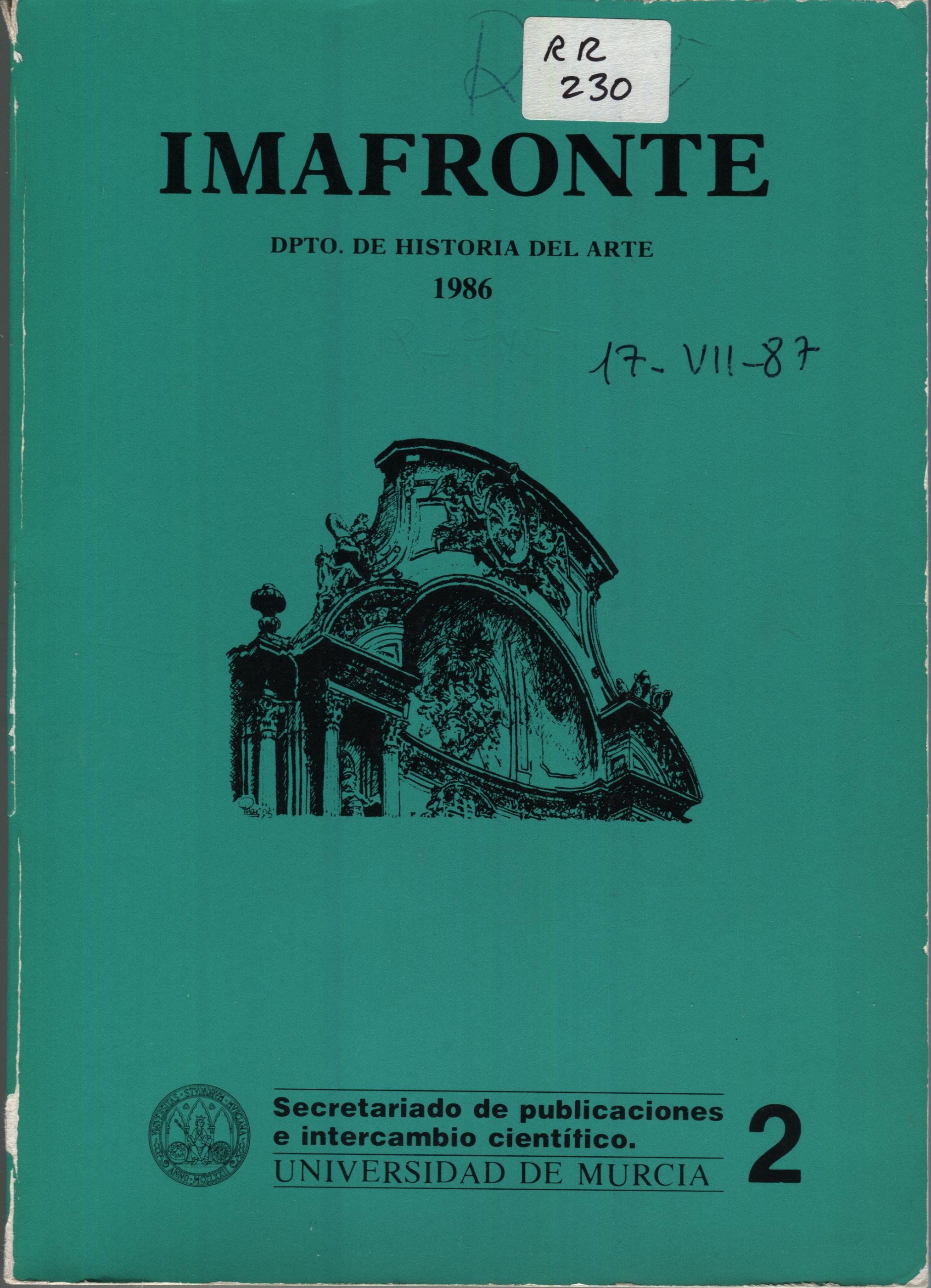FUENTES ICONOGRÁFICAS Y DE INSPIRACIÓN EN LA ESCULTURA DE FRANCÍSCO SALZILLO
Resumen
This paper tries to make know some stylistic and iconographic foundations of the Spanish sculptor of religious images F. Salzillo, who has traditionally been considered an artistic isolated in time and space from the rest of the sculptors of his time. The analysis new attempted explores the sources of inspiration, te orign of wich goes back to engravings of the XVIth century, and in general, to baroque paintings of the ensaing century. The Humanae Salutis Monumenta by Benito Arias Montano is one of the most important sources considered, because of the nearness between certain models of Salzillo's Passion repertory and the engravings accomplished to illustrate the work of Philip II's librarian. This theme (The Agony in the Garden) is the most important nucleus of the whole work and its connection with the Fleming and Dutch paintings of the XVIIth and XVIIIth centuries. The true interpretes of the dramatic sense gleaned from the Gospel of St. Matthew in that passage. Together with them, the echo of these influences in Mengs or D. Tiepolo collect with sufficient accuracy the effect those sources had on works carried out for Spain. This study advances in the internationalization of Salzillo's iconographic sources. he is connected with the Italian sculpture of his time and, in general, he is considered a perfect expert pf the Spanish and European artistic armosphere of the XVIIth and XVIIIth centuries.Descargas
-
Resumen518
-
PDF262
Las obras que se publican en esta revista están sujetas a los siguientes términos:
1. Los autores ceden de forma no exclusiva a la revista los derechos de explotación (reproducción, distribución, comunicación y transformación).
2. Las obras que se publican en esta revista están sujetas a la licencia Attribution-ShareAlike 4.0 International (CC By SA 4.0). Por lo que se pueden copiar, usar, difundir, transmitir y exponer públicamente, siempre que:
i) se cite la autoría y la fuente original de su publicación (revista, editorial y URL de la obra), permitiendo así su reconocimiento.
ii) se permite remezclar, transfromar o crear a partir del material mientras se mantenga la misma licencia del original.
3. Condiciones de auto-archivo. Se permite y se anima a los autores a difundir electrónicamente las versiones pre-print (versión antes de ser evaluada) y/o post-print (versión evaluada y aceptada para su publicación) de sus obras antes de su publicación, ya que favorece su circulación y difusión más temprana y con ello un posible aumento en su citación y alcance entre la comunidad académica. Color RoMEO: verde.
























